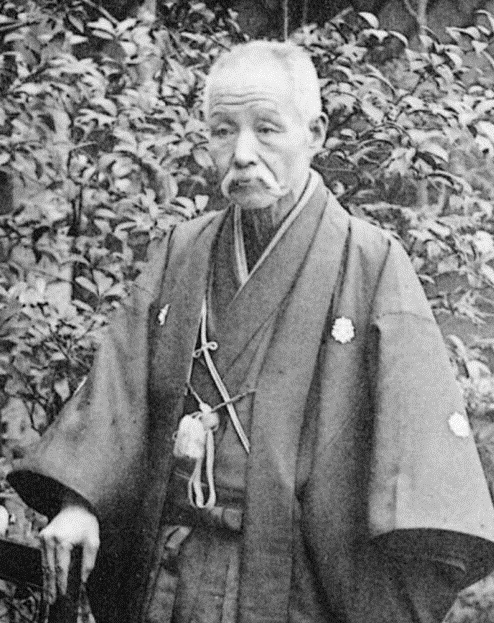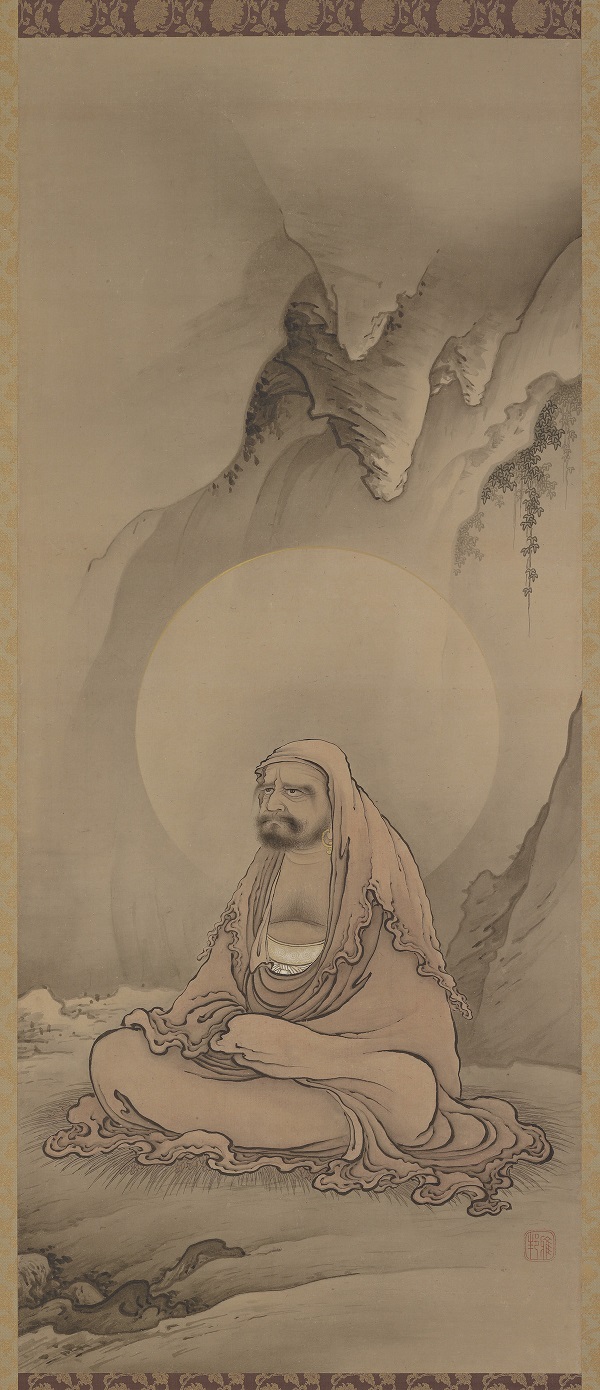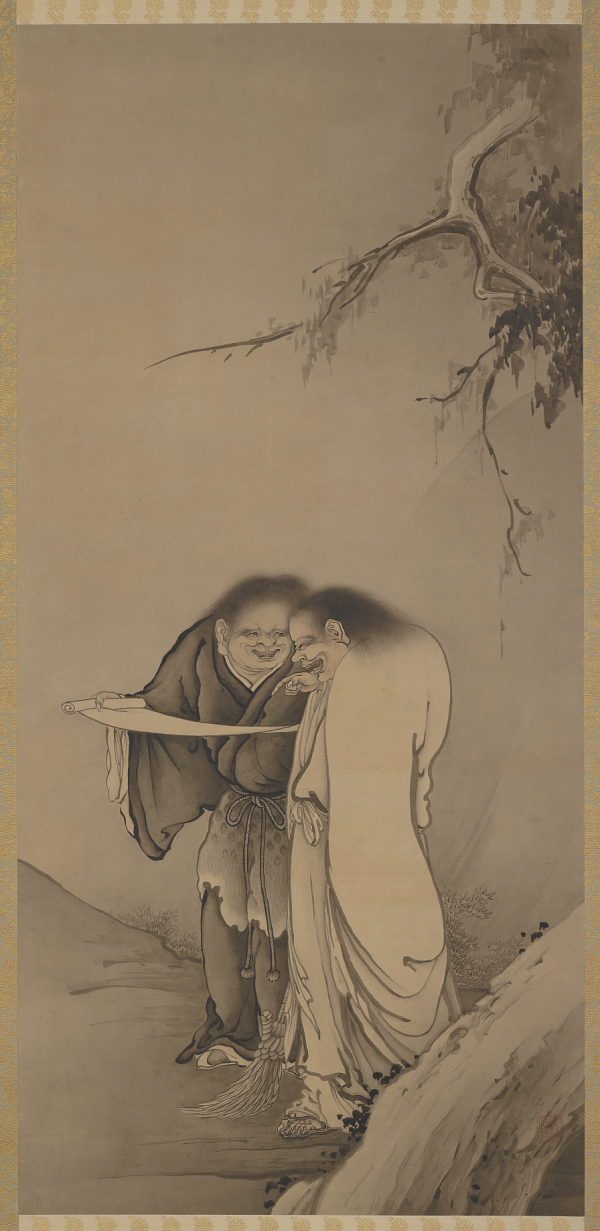ZEN MESTEREK ZEN MASTERS
« Zen főoldal
« vissza a Terebess Online nyitólapjára

橋本雅邦 Hashimoto Gahō (1835–1908)
https://en.wikipedia.org/wiki/Hashimoto_Gah%C5%8D

Bodhidharma seated in meditation, ca. 1885;
Ink and tint on paper; H x W (overall): 220.8 x 65.2 cm (86 15/16 x 25 11/16 in)
Freer Sackler Gallery

Han-shan and Shih-te (Kanzan and Jittoku), 1886;
Ink and slight tint on paper; H x W (overall): 224.5 x 73.2 cm (88 3/8 x 28 13/16 in)
Freer Sackler Gallery
The Chinese hermits known in Japanese as Kanzan (Hanshan in Chinese) and Jittoku (Shide in Chinese), lived near the sacred mountain Tiantaishan during the Tang dynasty (618–907). They appear frequently in Zen Buddhist paintings, in which they represent rejection of the secular world. Here Kanzan opens a scroll of his poetry, while Jittoku, a servant at a monastery, looks on.
Gaho's composition exploits contrasts of dark and light tones and sets the figures in a conventional but highly simplified landscape. The painting was shown in an exhibition organized by the Kangakai (Society for the Appreciation of Paintings), which had been organized by the American Ernest F. Fenellosa (1853–1908) to promote the creation of new Japanese-style paintings. Fenellosa wrote to Charles Lang Freer in 1902 that the painting had created such excitement that "the Emperor asked to borrow it and kept it several months." Fenellosa's influence in persuading collectors abroad to acquire paintings by living Japanese artists whose work he admired may account for the fact that few of the paintings shown in the Kangakai meetings or exhibitions have remained in Japan.

南泉斬猫 Nansen zanbyo, The Zen Patriarch Nanchuan (Nansen) Killing a Kitten,
Hanging scroll; ink on paper, 122.6 x 60.8 cm
Museum of fine Arts Boston